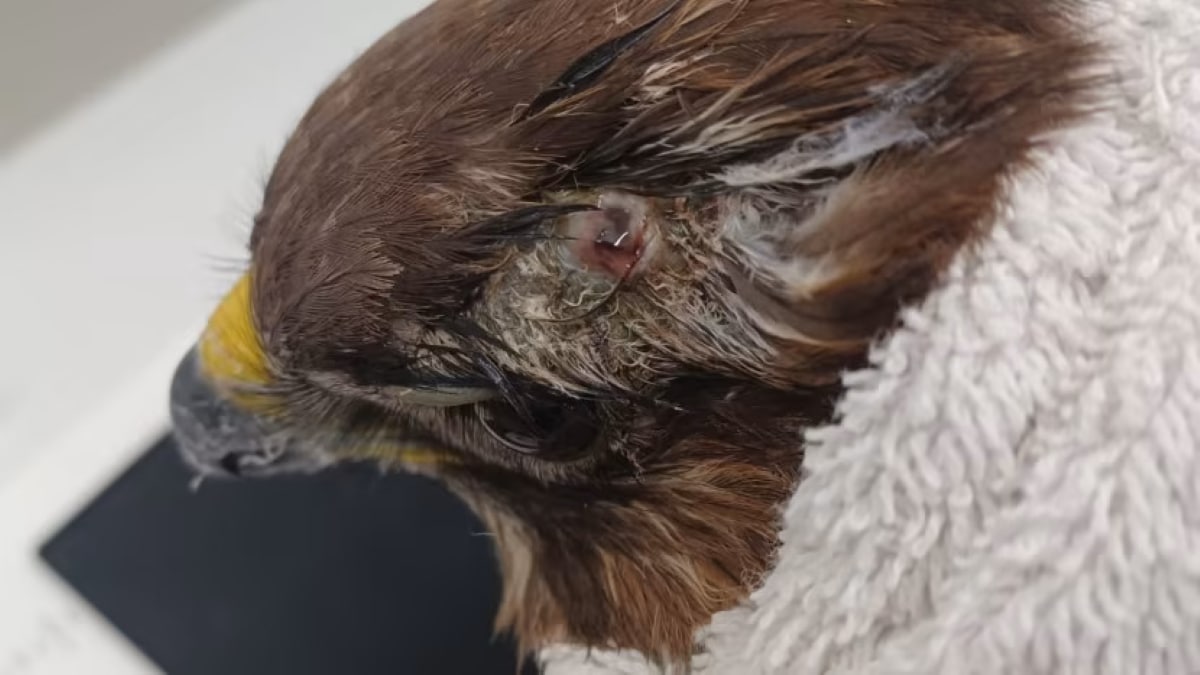ITV News is reporting that a female buzzard has been found ‘thin and weak’ in a garden in Cambridgeshire after surviving being shot with an airgun.
The bird was taken to a vet in Ely where an x-ray revealed she had an airgun pellet lodged in her head.
The RSPCA said it was a “miracle” that it had missed both the skull and the eye. They added that because the wound was infected and the bird was so emaciated it was likely she had been shot some time ago.
RSPCA inspector David Podmore said:
“It is upsetting to think that this beautiful bird was deliberately targeted and shot. While we do not know where the shooting would have happened, this is an offence under the Wildlife and Countryside Act 1981.
“We would urge anyone with any information about how this bird came to be harmed to call the RSPCA Inspector appeal line on 0300 123 8018 or the police.”

Who would shoot a buzzard?
All birds of prey – and the Common Buzzard (or buzzard) is a bird of prey – are fully protected by the Wildlife and Countryside Act 1981. This states that NO bird of prey can be shot, poisoned, or trapped (and they can not be intentionally or recklessly disturbed while they are nesting or caring for fledged chicks). There are no exceptions.
Buzzards are being increasingly targeted though. Once very scarce after centuries of persecution, buzzards have responded to protection and are now numerically the UK’s commonest species of bird of prey. As a result, there has been dark mutterings from shooting estates that they are now ‘too common’ and calls for licences (which so far have been resisted) to kill buzzards if they’re seen around pheasant pens.
Recent high-profile cases involving gamekeepers killing Buzzards include:
- In early 2022 Wiltshire gamekeeper Archie Watson was convicted of dumping the corpse of a buzzard into a covered well on a pheasant-shooting estate, which was later found to be where the bodies of eleven buzzards and four Red Kites had been hidden.
- In October 2022, Norfolk gamekeeper Matthew Stroud admitted to the intentional killing of six buzzards and a single Northern Goshawk as well as a string of other offences.
- And in January 2023 Dorset gamekeeper Paul Allen appeared in court after police found six Buzzards and ‘parts’ of three further Buzzards in a property search.
However, gamekeepers on shooting estates typically wouldn’t use an airgun to kill a buzzard.
It seems perhaps more likely that this was an opportunistic shooting. While the exact date when this bird was shot isn’t known and her condition was poor, she presumably was shot fairly recently to have survived until now. Buzzards can begin displaying in early spring when they are much more visible than usual. Perhaps the poor bird drifted over a farm when someone was out shooting rats, or maybe sailed low over the head of someone out with an airgun who saw a large target and fired almost spontaneously.
Regardless of intention, though, this does yet again highlight the fact that birds of prey are being illegally shot, raptor persecution can take place almost anywhere, and that airguns are dangerous weapons.
It also shows the importance of knowing the law – it is always illegal to shoot, poison, or trap a bird of prey – and of being ready to take the necessary steps to help tackle wildlife crime if at all possible.
Protect the Wild will be launching a new initiative in the near future which will help us do exactly that by becoming ‘eyes in the field’ and knowing how to better protect wildlife.
- Featured image of the shot buzzard by RSPCA

